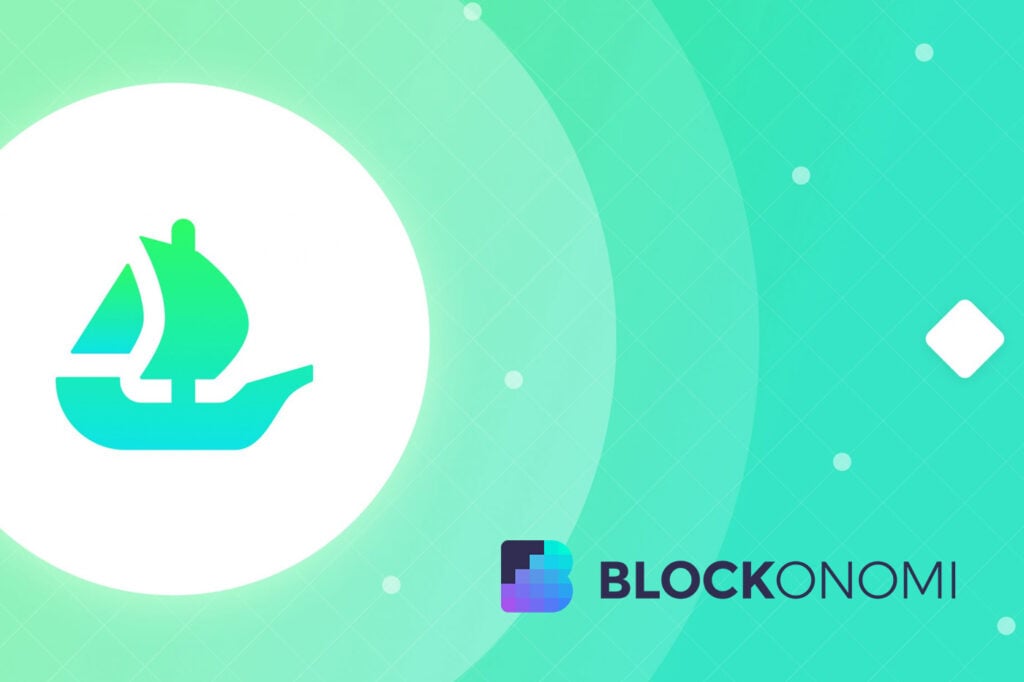
Leading NFT marketplace OpenSea is ramping up to strengthen its position amid competition from other rivals.
OpenSea, one of the most popular NFT marketplaces, announced the launch of a new feature aimed at improving platform security and user protection.
With this new feature, all suspicious NFT transfers on the platform will be rendered invisible.
New Security Layers
The platform will only display legitimate transfers. In other words, this feature acts as an additional protection to reduce the likelihood of fraudulent behavior approaching users.
In May, OpenSea announced the launch of a new system to detect and verify plagiarized non-fungible tokens (NFTs). The most recent additions are part of the company’s ongoing efforts to combat the growing problem of NFT fraud.
In terms of NFT verification, OpenSea employs a two-part approach that combines image recognition technology and human assessment to detect fraudulent NFTs. Specifically, the system will use a combination of both methods to detect fraudulent NFTs.
According to the company, its new technology will perform continuous scans of all NFT collections to identify any potential false NFTs. Any suggested changes will then be evaluated by the assessor.
Better Oversight is Here
Verifying the seller’s true identity has long been a problem in the world of NFTs, because NFT creators frequently use aliases instead of real names, while NFT buyers frequently do. This enables NFT thieves and clones to thrive.
Derin Finzer, CEO and co-founder of OpenSea, stated that the increased number of phishing scams was the driving force behind the new development.
To wit,
“Recently, we’ve seen scammers use these transfers to entice people to click links to malicious 3rd party sites. Our latest Trust & Safety release helps prevent this new scam.”
All of the new security enhancements will likely create some obstacles for NFT scammers.
As scammers develop more sophisticated tactics, it is critical to develop the platform’s security system to protect the community while also preventing any potential risks.
Seaport Protocol For Transaction Efficiency
In addition to the new security features, OpenSea also said on Tuesday that the platform is migrating to Seaport protocol.
Kicked off in May 2022, Seaport protocol is a Web3 marketplace protocol for NFT which aims to make buying and selling NFTs more safe and efficient.
Despite being introduced by OpenSea, the protocol will be managed by the community. The vision is to build it as a shared marketplace, an open valuable source for widespread adoption.
On June 15, OpenSea announced that the platform would be switching to Seaport in order to provide users with more advanced capabilities.
New Features Should Help
Seaport will offer a broad variety of features including lower gas rates, diversified NFT provisioning, and fees that would be eliminated entirely for new account creation as well as signature alternatives that are more user-friendly for customers.
The company stated that with the migration, users will spend 35%less in gas fees when engaging in activities on Seaport.
The overall savings for next year are anticipated to be $460 million (138,000 ETH) based on data from 2021. Additionally, reducing the creation fee might save $120 million per year (35,000 ETH).
To sell NFT at the Seaport, sellers will only have to pay a one-time fee per collection. OpenSea also adds capabilities including the ability to buy several NFTs in one transaction, offering real-time creator fees for multiple receivers, and calculating costs on an item-by-item basis.
Despite the current market recession, OpenSea stated that it is continuing to pursue a large-scale recruitment strategy.
This is in stark contrast to the enormous layoffs announced by many crypto companies, including Crypto.com (260 layoffs), BlockFi (which 850 layoffs), and Coinbase (1,100 layoffs).
Meanwhile, the Binance and FTX exchanges have not adjusted their plan and continued to pursue their hiring and growth goals.
The post OpenSea Boosts Security & Transaction Efficiency With Upgrade appeared first on Blockonomi.

















